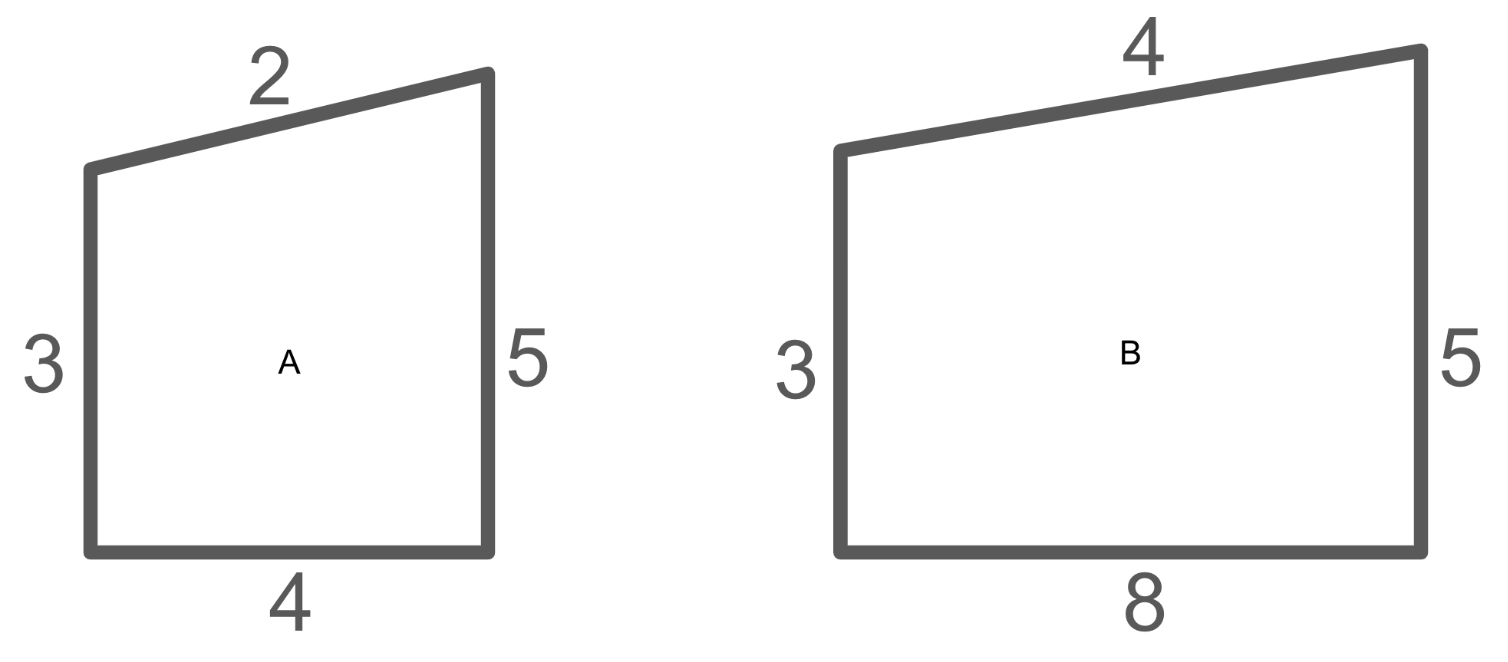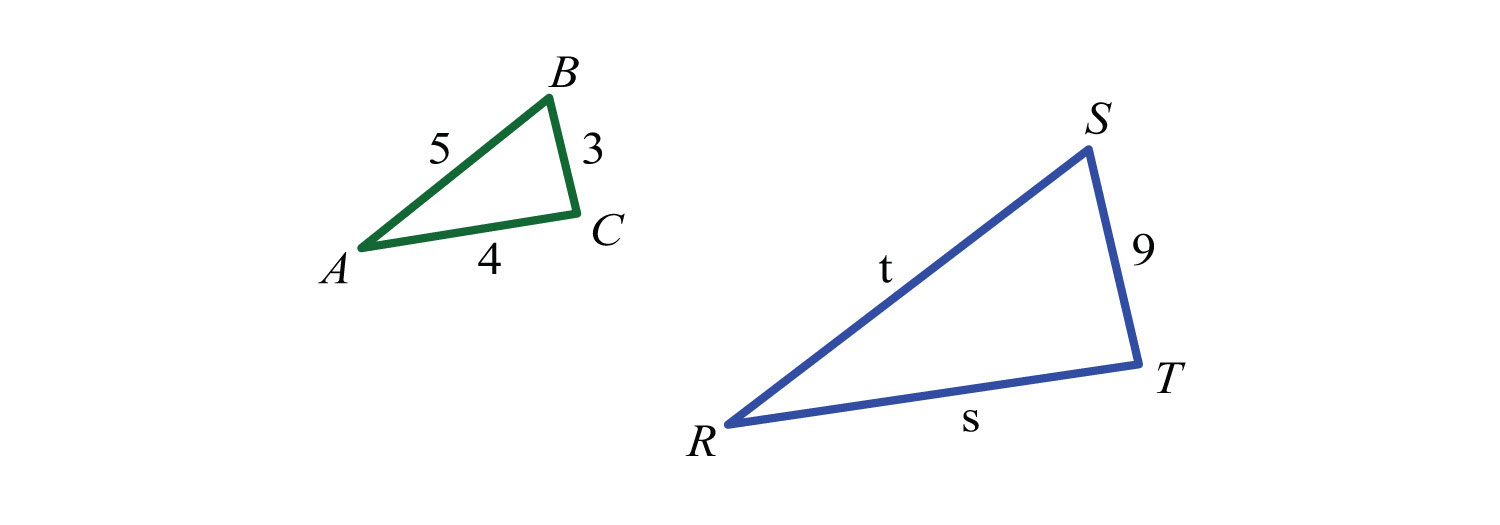True or False? Dilations always make a figure smaller.
¿Verdadero o falso? Las dilataciones siempre hacen que una figura parezca más pequeña.
False, it can make figures both bigger and smaller.
What does it mean to be similar?
¿Qué significa ser similar?
Two figures are scaled copies of each other.
The sum of all interior angles in a triangle will always equal this number.
La suma de todos los ángulos interiores de un triángulo siempre será igual a este número.
180^o
What is slope?
¿Qué es la pendiente?
A ratio of the height of a triangle over its base.
(height)/(base)
A transformation that flips figures is called...
Una transformación que invierte las figuras se llama...
Reflection
A dilation might change the size of a figure's side lengths but never the _______.
Una dilatación puede cambiar el tamaño de los lados de una figura, pero nunca el _______.
angles
Similar triangles have...
Los triángulos similares tienen...
The same corresponding angles.
Triangles A and B each have one angle measuring 38º. Are they automatically similar? Why or why not?
Los triángulos A y B tienen cada uno un ángulo que mide 38º. ¿Son automáticamente similares? ¿Por qué sí o por qué no?
No. We need at least two angles to be the same in each triangle.
Find the slope (pendiente) of line a
4/2 or anything equivalent
Daily Double
A transformation that slides or moves figures is called...
Una transformación que desliza o mueve figuras se llama...
A translation
Do dilations always produce SIMILAR or CONGRUENT figures?
¿Las dilataciones siempre producen figuras SIMILARES o CONGRUENTES?
Similar figures
Daily Double
List the 4 transformations that can be used to prove similarity.
Lista las 4 transformaciones que se pueden utilizar para demostrar la similitud.
1. Dilations
2. Translations
3. Reflections
4. Rotations
Are these two triangles similar? Why or why not?

They are similar because they have same corresponding angles
Find the slope (pendiente) of line b
4/4 or anything equivalent
When describing a reflection, it requires 1 thing. What is it?
Para describir un reflejo, se necesita una cosa. ¿Cuál es?
The line of reflection.
When describing dilations, it requires 2 things. What are they?
Para describir las dilataciones, se necesitan 2 cosas. ¿Cuáles son?
1) Center Point of Dilation
2) Scale Factor
Are these figures dilations of each other? Why or why not?

No, we need to scale every side length.
There are 2 similar triangles. Triangle A has side lengths measuring 10in, 16in, and 18in. Triangle B has side lengths measuring 5in, 8in and 9in (respectively). What is the scale factor?
The scale factor is
1/2
Find the slope (pendiente) of line c
2/4 or anything equivalent.
When describing a translation, it requires 2 things. What are they?
Al describir una traslación, se requieren 2 cosas. ¿Cuáles son?
1. Direction (up, down, left, or right)
2. Distance (number of units)
How will dilating a figure with a scale factor of 1/2 change the side lengths of a figure?
¿Cómo cambiará la medida de los lados de una figura al dilatarla con un factor de escala de 1/2?
It will make the figure 2 times smaller from the center of dilation.
There are two triangles. Triangle A has angles measuring 40º, 40º, and 100º. Triangle B has angles measuring 40º, 100º, and the third angle is unknown. Are these triangles similar? Why or why not?
Yes because the missing angle in Triangle B would measure 40º. Therefore, they have the same corresponding angles.
These two triangles are similar. Find BOTH of the missing side lengths.

s=12
t=15
Daily Double
What does each letter in ROAR stand for?
¿Qué significa cada letra en ROAR?
Respect
Ownership
Achievement
Resourceful
When describing a rotation, it requires 3 things. What are they?
Para describir una rotación, se necesitan 3 cosas. ¿Cuáles son?
1. Center of rotation
2. Rotational angle (ie, 180º)
3. Direction (clockwise or counterclockwise)
